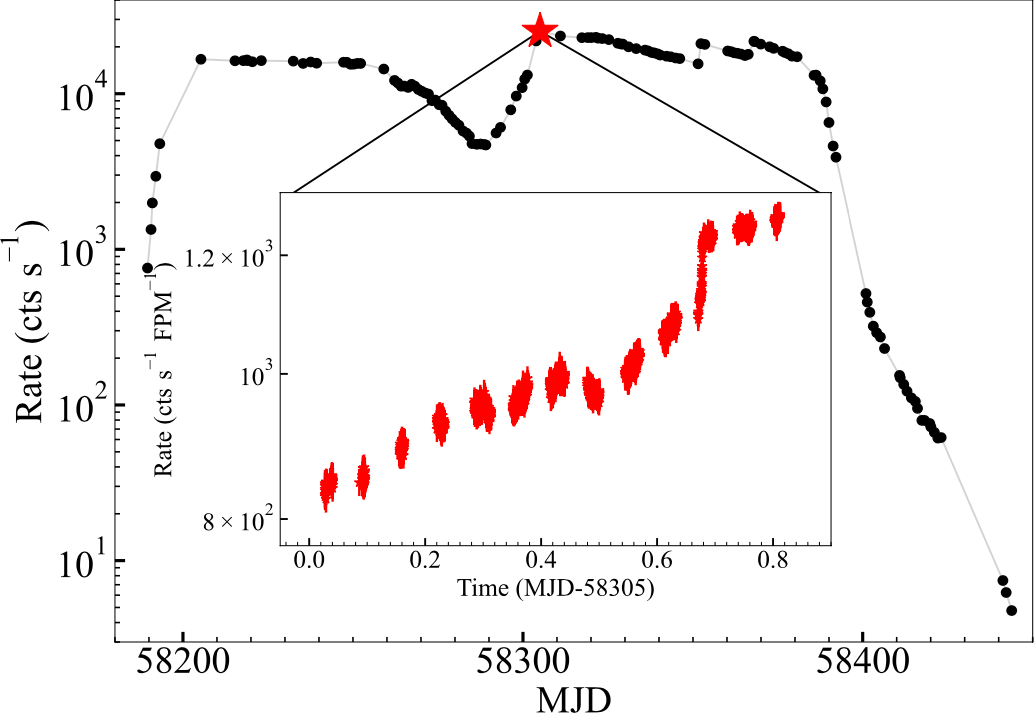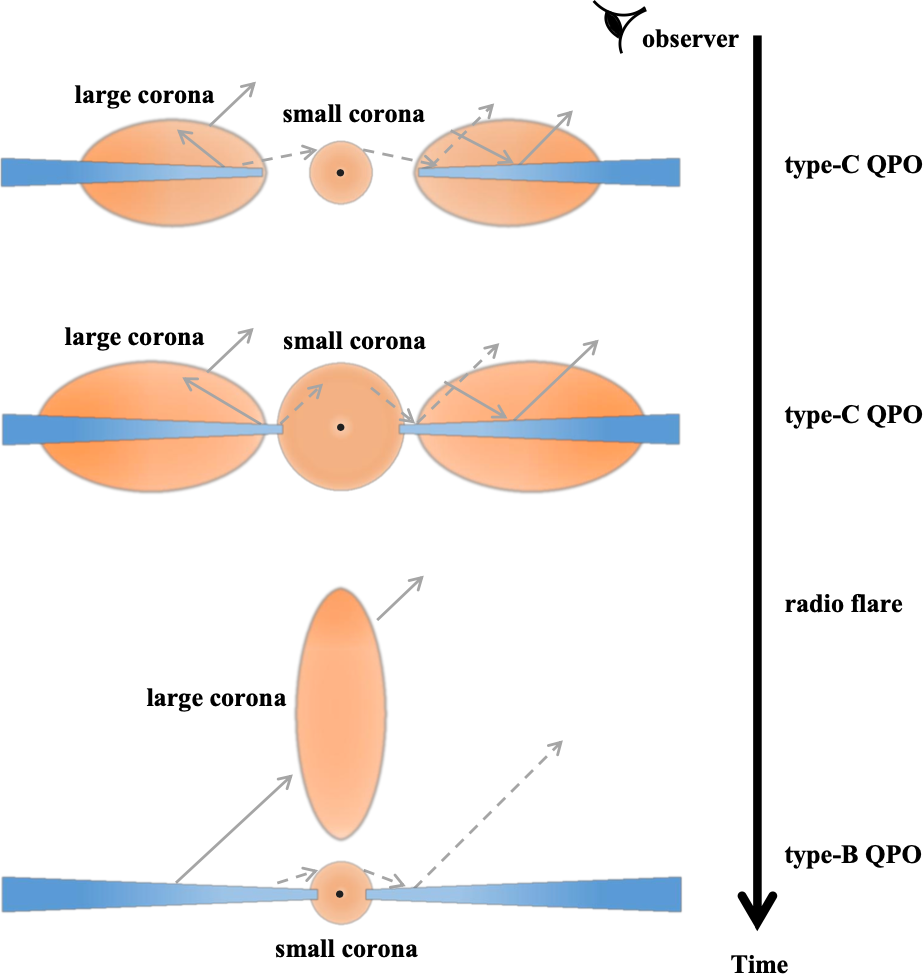NICER / ISS Science Nugget
for September 14, 2023
Quasi-predictability of black hole transients
As NICER tracks the outburst of a new, bright black-hole transient into its fourth week, some of the intriguing science results that will ultimately emerge from these data are foreshadowed by a steady stream of papers, many published and some still in process, describing insights gleaned from a similar event that began in March 2018: the black-hole binary system MAXI J1820+070 briefly became one of the brightest X-ray emitters in the sky, while NICER observed its evolution over a span of some 250 days.
Early in the outbursts of black-hole binaries, as matter from the companion star begins to fill the volume around the black hole, a consistent pattern of behaviors is seen in aspects of the systems' X-ray emissions: spectrally, higher-energy X-rays dominate at first, giving way to low-energy X-rays later; temporally, the emission is highly variable initially, especially on short timescales, but becomes more stable at the same time as the transition to the low-energy "soft state." Early brightness variations are generally noisy, but a small portion (a few to ~20 percent) of the emission follows a more organized pattern, in what are called quasi-periodic oscillations (QPOs) at frequencies between approximately 1 and 10 cycles per second (Hz). QPOs have been categorized as Type A, B, or C, depending on their properties; most importantly, transitions between the types appear to be correlated with other changes in black-hole transients, such as spectral states and emissions at other wavelengths. A new analysis of QPO transitions in the 2018 outburst of MAXI J1820 -- by R. Ma (Kapteyn Astronomical Institute, The Netherlands) and collaborators, recently published by the peer-reviewed UK journal Monthly Notices of the Royal Astronomical Society -- has prompted a new model of the energetic structures in the near vicinity of the black hole. In this model, as the accretion flow pushes the inner edge of the disk deeper into the black hole's gravitational well, both a small corona of super-heated gas surrounding the black hole and a larger corona extending vertically from the disk grow in size; at the time of the critical transition in QPOs from type C to type B, the large corona is apparently channeled into a vertical flow presumably responsible for flaring emission detected at radio wavelengths.
The nature of QPOs, and the changing geometries of matter flows near black holes, remain open to interpretation, but continued close monitoring with NICER and its multi-wavelength partners promises definitive discrimination between competing models.


Left: NICER "light curve" of the black-hole transient MAXI J1820+070, where time is shown in Modified Julian Day numbers (MJD 58200 corresponds to 23 March, 2018) and each black point represents a single day's average rate of detected X-ray photons. The red star marks the day on which a rapid transition occurred (at approximately MJD 58305.7) in the brightness and variability properties of MAXI J1820; red points in the inset indicate the rate of photon detections in each of NICER's active focal plane modules (FPMs) within 10-second intervals, and groups of points reflect individual 90-min ISS orbits. (Figure credit: Ma et al. 2023)
Right: Schematic depiction of the proposed arrangement of an accretion disk (seen edge-on) and two "corona" regions as they evolved during the 2018 outburst of MAXI J1820. The nominal observer is above and to the right, with grey arrows indicating the paths of photons (solid for direct, dashed for indirect or "reflected") that reach the observer. (Figure credit: Ma et al. 2023)
<< Previous
Main Index
Next >>